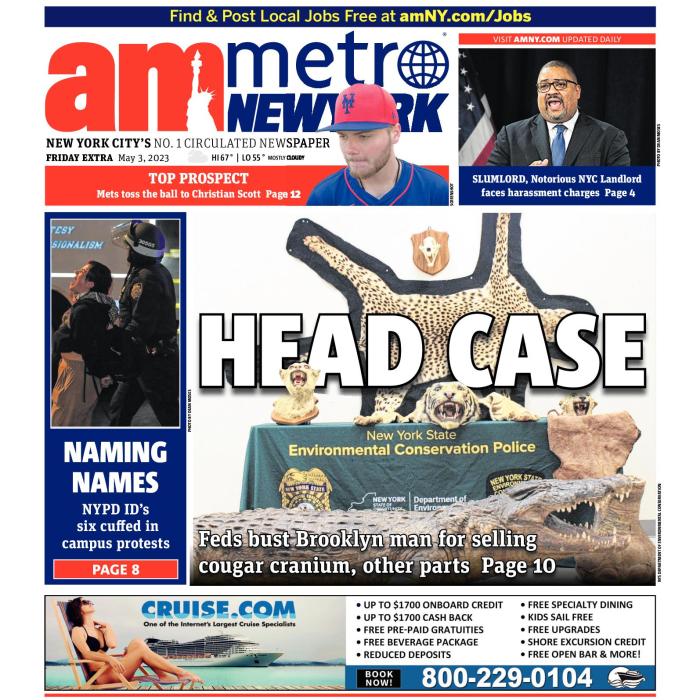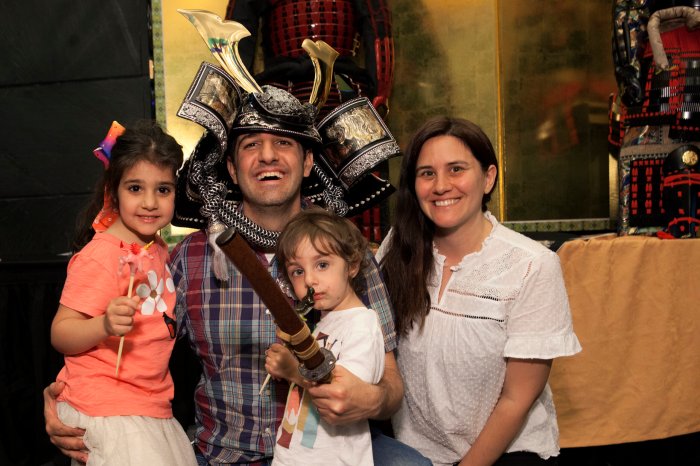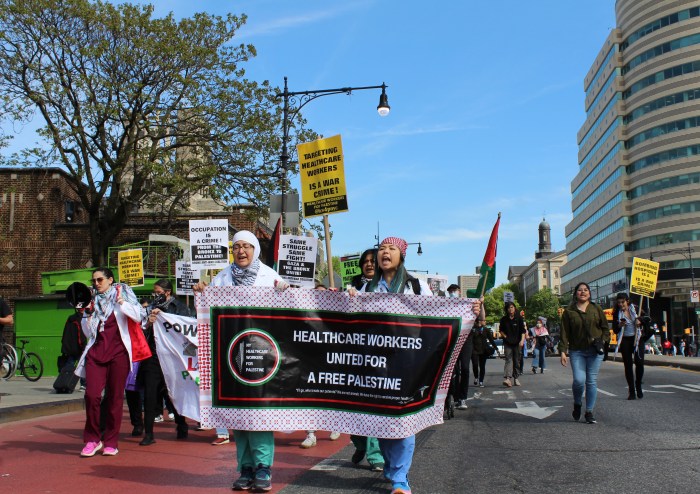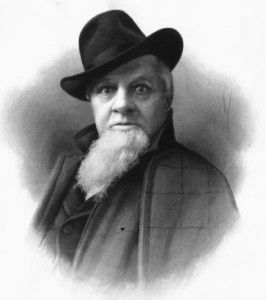By Alyssa Giachino
After more than 10 years, Basketball City’s plan to build a recreation facility on the Lower East Side inched one step forward last week.
At its May 29 full-board meeting, Community Board 3 approved — with 35 – 2 with 3 abstentions — the use of Pier 36 just north of the Manhattan Bridge for an athletic facility that will include basketball courts, an exercise room and reduced rates for neighborhood residents.
In response to requests from the board’s Parks Committee, for the first two years of operation, Basketball City will offer deep discounts to neighborhood residents, with a yearly membership rate of $119 for individuals and $199 for a family, plus a $3 to $4 fee for open-play hours. The facility will set aside a percentage of court time for local residents, ranging from 10 percent during peak weekend hours to 25 percent for off-peak hours on weekdays. Basketball City will provide free access for local schools and nonprofit groups, and do some local hiring.
At the May 29 C.B. 3 meeting, some community members heaped praise on Basketball City for the services and opportunities it provided to public schools and nonprofit organizations during its decade in Chelsea on Pier 63 at W. 23rd St.
But others stood and pleaded for the board to block a privately run facility whose fees, even with discounts, are beyond the reach of area residents, where the average income was $24,000 for the 2000 census.
Some said the neighborhood has changed since Basketball City first submitted its bid for part of the Lower East Side pier in 1996, and that the proposal no longer fits with the area.
“Twelve years ago, nobody wanted to be in our neighborhood,” said Sister Deborah Lopez, principal of St. Joseph’s elementary and middle school in Chinatown, during the public-comment session. She asked that the request for proposals process be reopened so that parties who may be newly interested in the pier could compete.
But David Crane, who chairs the C.B. 3 Transportation Committee, warned, “If we vote ‘No,’ the higher levels of government would pass it and we would lose the stipulations. The city does not fund its Parks Department very well. This is a way for us to get a facility.”
David McWater, the board’s chairperson, said of the Parks Department, “The likelihood of them building a recreational center is astronomically slim.”
Rocky Chin, a member of the C.B. 3 Parks Committee and resident of Gouverneur Gardens near Pier 36, has long opposed the project, and cast one of the two “No” votes.
“Everyone has agreed that we want community space, recreational space,” Chin said. “My concern is, is this the best deal we could get.”
Ultimately, an overwhelming majority of the 50-member board concluded that Basketball City was far better than nothing at all.
Board member Alexander Gonzalez said after the vote that Basketball City “may not be the perfect answer,” but he decided an imperfect solution beats no facility at all. “I think we’ve been shortchanged more than enough,” he said. “I think this is a change and it’s a step in the right direction.”
After the votes had been cast, McWater directed a comment to Basketball City’s president Bruce Radler, who sat at the rear of the auditorium.
“I personally voted for this because of the good corporate citizen you’ve been on the West Side. I certainly hope that continues,” McWater said.
Following the meeting, Radler said he was pleased with the outcome.
“If you look at Basketball City’s history and what we have done for the community and for kids, it speaks to who we are,” he said. “What we teach is life skills. It’s not just about basketball.”
But the process is far from over, and Radler admitted that the victory at C.B. 3 is only one small piece of the puzzle.
The board’s vote was just the first step of the city’s uniform land use review procedure, or ULURP. The proposed project must now also undergo reviews by the borough president, the City Planning Commission, City Council and the mayor. ULURP typically lasts at least six months.
Plans for the redevelopment of Manhattan’s waterfront spaces have elicited creative ideas and raised hackles about conflicting visions.
Last September, Basketball City was bounced from Pier 63 on the West Side, in order for the Hudson River Park to fulfill its legal mandate for the pier to be a free public-use space.
The Lower East Side waterfront, with its rows of Housing Authority projects and low-to-moderate-income developments has maintained a comparatively low profile. Yet, the growing concerns about using public land for private facilities echo the debates on the West Side.
In the case of Pier 36, the question of how to use the space has been slogging through bureaucracy for 15 years.
In the early 1990s, then-Mayor David Dinkins envisioned Pier 36 as a refueling station for city vehicles. Assemblymember Sheldon Silver sued the city in 1993, arguing that that idea violated “air-contamination restrictions” and that the area was already overburdened as a “de facto dumping ground” for city operations.
A memorandum of understanding was signed in 1994 to settle the suit, and the northern third of the pier, about 64,000 square feet, was “permanently dedicated for use by the community as a community recreation facility.”
The agreement included an allocation from the city to renovate the facility, which Silver lobbied to increase to $2.75 million.
In 1996, Basketball City was selected for the space after the Parks Department issued a request for proposals for a tenant. In subsequent budget negotiations, Basketball City increased its investment offer from $500,000 to $2.5 million.
This March, C.B. 3 approved Basketball City’s proposal for the exterior design, and now, after last week’s vote, the land use review procedure has been launched.
Tenant association presidents and members of the Waterfront Coalition — a group of residents monitoring the riverfront’s redevelopment — say their C.B. 3 representatives haven’t listened to residents from the more than eight residential towers overlooking Pier 63. They note that 1,200 of these residents signed a petition a couple of years ago opposing the project.
“They’re in the business of representing the community,” said Daisy Echevarria, of the Lands End 1 Tenant Association, referring to C.B. 3. “We are the community and this community is saying ‘No,’ but they are saying ‘Yes.’”
Jim Jannuzzi, of the Two Bridges Neighborhood Council, said, “Usually less affluent communities are the ones who have to take these moneymaking organizations when other neighborhoods have said, ‘No, we don’t want them.’”
But George Diaz, who has served on C.B. 3 for 14 years and lives in Lands End 1, wants to see the project reach completion. He said Basketball City’s membership offer for neighborhood residents is far below private health clubs or the YMCA, and is comparable to the Parks Department’s fees for its recreation centers.
“While it is a profit-making venture, it has a very low threshold for profit margin as opposed to free time,” Diaz said. “I think Basketball City is really going out of their way to provide a facility to our community that does not exist.”
Jannuzzi said he believes Basketball City is a good company and that Radler is honorable.
“We all agree he’s a nice man,” he said. “But [even with] the concessions, first we can’t afford it, and secondly, it’s not binding and it’s not enforceable and it’s only for two years at best.”
To help pave the way forward, over the last two months, Silver, now the Assembly’s speaker, brought community representatives and Basketball City together for two meetings at his office.
“For over 15 years, I have worked with my community to provide the best possible facility on Pier 36,” Silver said in a statement. “Together we have succeeded in opposing plans for a prison barge and a vehicle refueling station, both of which would have diminished our quality of life. I am proud that our efforts have led to an agreement that provides our community with a recreational facility and access to the waterfront, one of our most precious natural resources.”
Though the meetings successfully clarified many questions, tenant representatives say when they saw the details of the proposal, their fears about lack of access were confirmed.
Jannuzzi said local residents’ needs will be smothered by Basketball City’s other clients.
“The commitments they have are for the city at large, rather than this community,” Jannuzzi said.
But Ann Johnson, a C.B. 3 member and 38-year resident of the Smith Houses, is critical of the residents group, accusing them of using stalling tactics.
“They came in far too late, after the process was already done,” she said. “The best thing to do is to try and work with Basketball City and get the best out of them.”

















